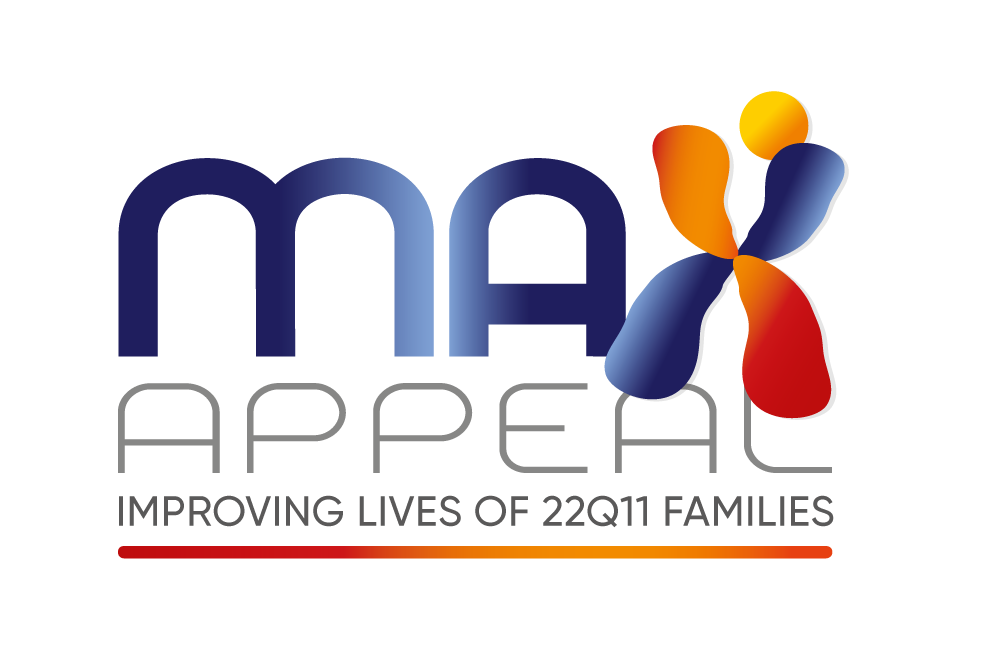22q11.2 Deletion Syndrome: A Journey Through Names and Discoveries
Updated: Nov 21, 2023 Source: www.22qMinded.com
In the world of medical research, some conditions are discovered independently by perceptive clinicians, leading to a different descriptions and alternative names. One such enigmatic condition is chromosome 22q11.2 deletion syndrome (Del22q11.2 or 22q11DS – I will use the former acronym to differentiate the deletion from the duplication syndrome) that you most likely is quite familiar with but that is largely unknown to most people. This blog post takes you on a journey back to the 1950s to 1970s when dedicated specialists observed and named different aspects of this syndrome, shedding light on its various facets.
A Tale of Independent Discoveries:
Imagine a time when medical knowledge was not as interconnected as it is today. Researchers corresponded via letters, subscribed to journals, and attended conferences in their field. A time when language, culture and political differences often made it difficult to keep up to date with other people’s discoveries. In those decades, several astute clinicians from diverse specialties made ground-breaking observations, each describing a part of what we now know as Del22q11.2
Dr. Eva Sedlačková: Dr. Sedlačková, an otolaryngologist (ear, nose, and throat specialist) from Prague (Czecheslovakia), was among the very first to notice children with intriguing symptoms. In 1955, she first documented cases of hypernasal speech, congenitally shortened soft palates, facial abnormalities, and intellectual impairments. Little did she know that she was glimpsing into the world of 22q11.2DS. Because she wrote in Czech and lived behind the iron curtain, it took some time before her work became more widely known. However, subsequently researchers have identified that the vast majority of Dr. Sedlačková’s patients indeed had the Del22q11.2.
Dr. Angelo DiGeorge: Another pioneer who played a pivotal role in our current understanding of the syndrome was world renowned endocrinologist Dr. DiGeorge who published the first English paper on the syndrome in the mid 1960’s. Dr. DiGeorge lived in Philadelphia (USA) and in his highly cited work he described children with immunodeficiency, hypoparathyroidism, and congenital heart diseases. The condition describing people with this constellation of symptoms was named after him - “DiGeorge Syndrome”- a name that is still widely used in the field of immunology. His work added more pieces to the 22q11.2DS puzzle and created a strong tradition for treating, and studying, the phenotype (or characteristics) of the syndrome in Philadelphia that still is one of the world-leading clinical and research centres of exellence under the helm of Dr. Donna Mcdonald-McGinn.
Dr. William Strong: Published a case series in the late 1960’s that at the time received little attention, in which he described the characteristics of a family with several members with similar symptoms.
In the mid 1970’s a group of Japanese physicians such as Dr. Kinouchi and Dr. Takao reported their observations of a group of children with what they named Conotruncal Anomaly Face syndrome or Takao syndrome. Their focus was on a group of patients with co-occuring cardiac defects, hypernasal speech and specific facial characteristics.
Dr. Robert Shprintzen: In the late 1970’s, speech pathologist Dr. Shprintzen described children with cleft palates, cardiac anomalies, unique facial characteristics, and learning difficulties. Dr. Shprintzen, a clinician and researcher originally from New York, gave the condition the name velo-cardio-facial syndrome to describe the main triad of characteristics of the syndrome but the condition was also named "Shprintzen syndrome" as a nod to his original (and long-standing) contributions to research and clinical work in the field.
The Multitude of Names:
As you can imagine, with various experts describing different aspects of the same condition, it led to a multitude of names for 22q11.2DS. While each expert described the constellations of symptoms and characteristics eloquently and well from their field of expertise, it would be until the 1990’s that the shared genetic underpinnings of these seemingly diverse conditions were elucidated eminent scientists such as Prof. Peter Scambler and Dr. Deborah Driscoll who developed techniques and methodologies that were able to identify the deletion in a large number of patients.
Today, to avoid confusion, the syndrome is predominantly referred to as 22q11.2 deletion syndrome, named after its underlying genetic cause. This standardisation helps unify the knowledge and understanding of this complex condition. However, other names are still in use and largely dependent on the training of the diagnosing medical doctor and the field of medicine they are in.
DiGeorge syndrome Velo-cardio-facial syndrome (VCFS)
CATCH 22 (Cardiac defects, abnormal facial features, thymic hypoplasia, cleft palate, and hypocalcaemia) – typically not used now because of negative connotations.
Cayler cardiofacial syndrome Conotruncal anomaly face syndrome (CTAF/CAFS)
Autosomal dominant Opitz G/BBB syndrome
Shprintzen syndrome Sedlačková syndrome
Takao syndrome
Modern Understanding
In the present day, we are witnessing a remarkable surge in the number of clinicians and researchers delving into the intricacies of the syndrome. What's even more fascinating is the shift in research focus – it's no longer limited to just the physical and medical aspects of the syndrome. Instead, there's a broader perspective that encompasses the emotional well-being and mental health of individuals with the syndrome, along with the profound impact it has on both them and their families.
Today, research and clinical efforts are more person and family-centred than ever before. Researchers and clinicians draw upon the invaluable lived experiences of individuals with the syndrome and their families, ensuring that the activities undertaken are not only significant but also highly relevant. This approach marks a significant step forward in understanding and addressing the multifaceted challenges posed by the syndrome, offering hope and support to those affected and their loved ones.
Conclusions
The history of Del22q11.2 is a testament to the collaborative efforts of dedicated clinicians and researchers who independently glimpsed into its various aspects. From hypernasal speech to congenital heart issues, each discovery contributed to our understanding of this syndrome. As we embrace the name "22q11.2 deletion syndrome," we honour the journey of discovery that brought us here, where our understanding and knowledge of the syndrome is more interconnected than ever before.
References Some of the original research articles and other papers you might find interesting are referenced below although many are difficult to find nowadays.
DiGeorge, A., Discussion on a new concept of the cellular immunology. J. Pediatr, 1965. 67: p. 907-908.
Kinouchi, A., et al., Facial appearance of patients with conotruncal anomalies. Pediatr Jpn, 1976(4): p. 17:8.
Scambler, P.J., et al., Microdeletions within 22q11 associated with sporadic and familial DiGeorge syndrome. Genomics, 1991. 10(1): p. 201-206.
Sedlačková, E., Insuficience patrohltanoveho zaveru jako vyvojova porucha. Cas Lek Cesk, 1955. 94: p. 1304-1307.
Sedláčková, E., The syndrome of the congenitally shortened velum the dual innervation of the soft palate. Folia Phoniatrica et Logopaedica, 1967. 19(6): p. 441-450.
Shprintzen, R.J., et al., A new syndrome involving cleft palate, cardiac anomalies, typical facies, and learning disabilities: velo-cardio-facial syndrome. Cleft Palate J, 1978. 15(1): p. 56-62.
Strong WB. Familial syndrome of right-sided aortic arch, mental deficiency, and facial dysmorphism. J Pediatr. 1968 Dec;73(6):882-8.
Vrticka, K., Present-day importance of the velocardiofacial syndrome. To commemorate the late prof. Eva Sedlačková, MD, on the 50th anniversary of her original publication. Folia Phoniatr Logop, 2007. 59(3): p. 141-6
https://www.22qminded.com/

